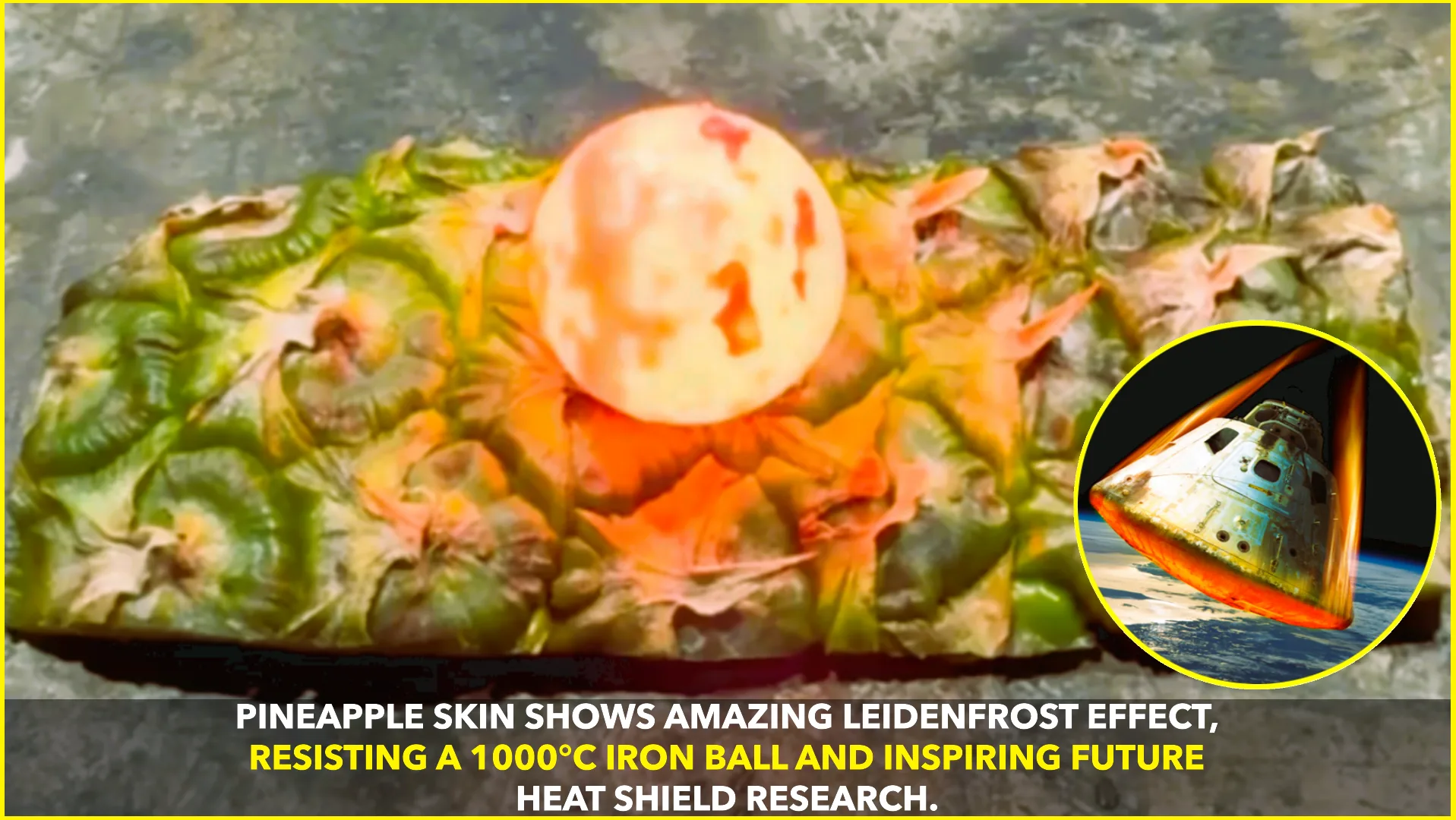When you think of pineapples, you probably imagine a tropical fruit with a spiky exterior and juicy sweetness inside. But recently, the humble pineapple made headlines for something far more unexpected: its tough outer skin’s surprising resistance to extreme heat.
In a striking demonstration, a red-hot iron ball heated to nearly 1000°C was placed on the skin of a pineapple. Instead of instantly charring or burning, as one might expect, the skin showed remarkable resilience. The reason behind this unusual phenomenon lies in physics—the Leidenfrost effect.
What Happened in the Experiment
When the glowing iron sphere touched the pineapple’s surface, the fruit’s natural moisture immediately vaporized. But instead of evaporating away, that vapor formed a thin, protective steam cushion between the scorching iron and the pineapple skin.
This vapor layer acted as an insulating shield, reducing direct heat transfer. The result? The skin resisted the searing temperature for several moments without suffering significant burns.
Understanding the Leidenfrost Effect
The Leidenfrost effect is a fascinating physical phenomenon named after Johann Gottlob Leidenfrost, an 18th-century German doctor and theologian who first described it.
It typically occurs when a liquid comes into contact with a surface much hotter than its boiling point. Instead of evaporating instantly, the liquid creates a stable layer of vapor that prevents the liquid from boiling away too quickly.
A common demonstration of this is seen when drops of water are sprinkled onto a very hot frying pan. Instead of vanishing at once, they skitter and dance around, protected by their own steam layer. In the case of the pineapple, its internal water content provided that protective vapor layer under the intense heat.
Why Pineapple Skin Works So Well
Pineapple skin is naturally tough, designed by nature to protect the delicate fruit inside from pests, heat, and external damage. Its structure contains layers of fibers and moisture-rich cells, which make it more resistant compared to the skin of many other fruits.
When the iron ball touched it, this unique composition meant that not only did vaporization occur instantly, but the fibers also slowed down the rate at which the heat penetrated deeper. This gave the skin an extra edge in resisting the extreme conditions, at least temporarily.
A Spark for Scientific Inspiration
The most exciting part of this discovery is not just the spectacle but the potential implications it carries. Could the pineapple’s natural defense inspire the next generation of heat shields?
Scientists have long studied nature for engineering solutions—a field called biomimicry. From airplane wings inspired by bird flight to water-resistant surfaces modeled after lotus leaves, biology has often pointed the way toward innovations in technology.
Pineapple skin, with its ability to briefly withstand searing heat through the Leidenfrost effect, could open doors to new approaches in designing thermal barriers. For instance, future spacecraft re-entering Earth’s atmosphere need heat shields capable of resisting thousands of degrees of temperature. Learning from how the pineapple’s surface handles intense heat could inspire materials that harness similar vapor-barrier effects.
The Limits of the Effect
Of course, it’s important to note that the pineapple skin didn’t survive indefinitely. The Leidenfrost effect buys only a short window of protection before the vapor barrier breaks down and the surface starts to burn.
Still, the fact that a fruit’s skin can resist a 1000°C iron ball, even for a few seconds, highlights how remarkable natural structures can be. And in science, even small phenomena can lead to big breakthroughs.
Final Thoughts
What started as a simple physics demonstration has become a reminder of how much we can learn from the natural world. The pineapple, a fruit known for its sweetness, now also symbolizes resilience and innovation.
As researchers continue to look to nature for inspiration, who knows? One day, astronauts might be protected by heat shields whose designs trace back to the spiky armor of a tropical fruit.
For now, the experiment stands as a fascinating blend of physics, curiosity, and the promise of nature-inspired engineering.










